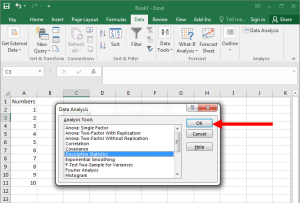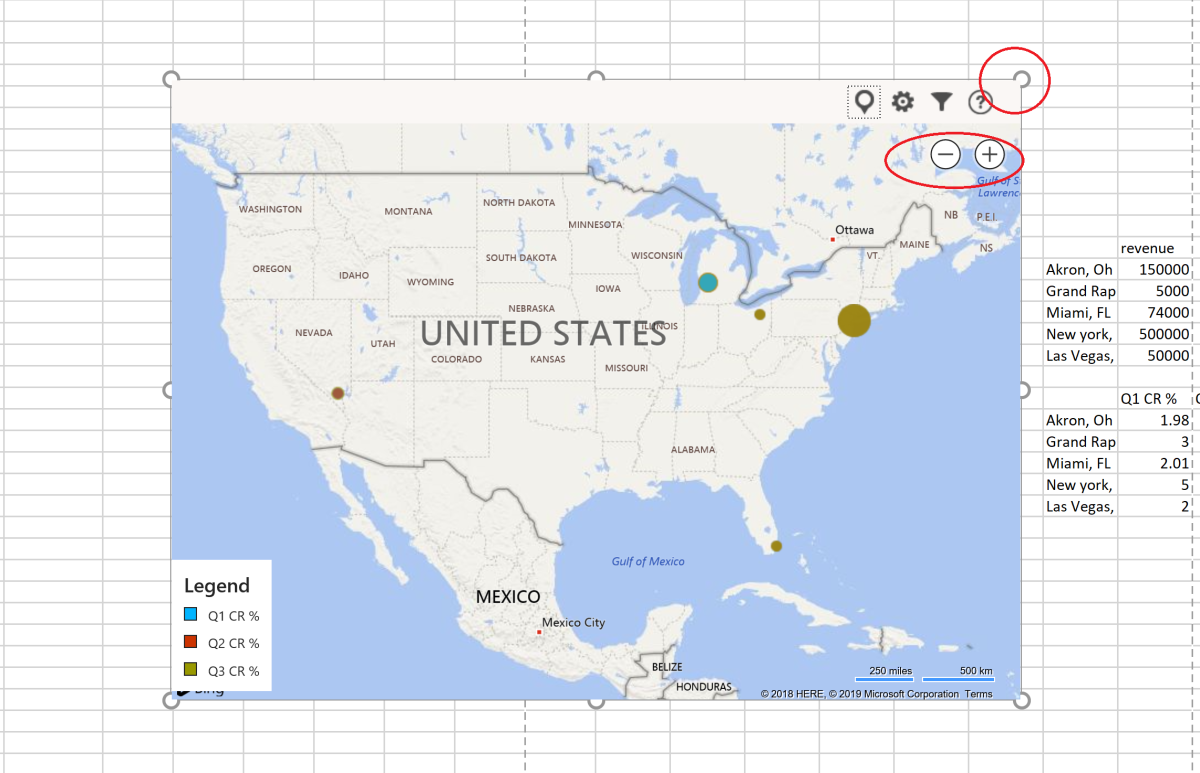
How to Create Descriptive Statistics in Excel
- On the Data tab, in the Analysis group, click Data Analysis . Note: can't find the Data Analysis button? Click here to load the Analysis ...
- Select Descriptive Statistics and click OK.
- Select the range A2:A15 as the Input Range.
- Select cell C1 as the Output Range.
- Make sure Summary statistics is checked.
- On the Data tab, in the Analysis group, click Data Analysis. ...
- Select Descriptive Statistics and click OK.
- Select the range A2:A15 as the Input Range.
- Select cell C1 as the Output Range.
- Make sure Summary statistics is checked.
- Click OK.
What are the 3 main types of descriptive statistics?
Descriptive Statistics 1. On the Data tab, in the Analysis group, click Data Analysis. Note: can't find the Data Analysis button? Click here to... 2. Select Descriptive Statistics and click OK. 3. Select the range A2:A15 as the Input Range. 4. Select cell C1 as the Output Range. 5. …
How to run descriptive stats Excel?
Click the Data tab’s Data Analysis command button to tell Excel that you want to calculate descriptive statistics. Excel displays the Data Analysis dialog box. ... Load and activate the Analysis ToolPak. Click the File tab, click Options, and …
How to perform descriptive analysis in Excel?
Jun 03, 2020 · Overall, the steps of using descriptive statistics in excel are: 1. Prepare the data set. 2. Activate analysis toolpak add-ins add options menu. 3. Choose the descriptive statistics at the data analysis menu. 4. Check the statistic value that you want to generate. 5. Click Ok. 6. Do not forget to make the output interpretation.
How to do basic statistics in Excel?
Oct 16, 2021 · How To Turn On Descriptive Statistics In Excel. I used RandBetween Function to generate the random numbers Navigate to DATA Data Analysis Descriptive Statistics Select Input Range as A1A19 and check the box Labels in first row so that the summary table header will display. Select Descriptive Statistics and click OK.
How do I enable Data Analysis in Excel 2020?
Click the File tab, click Options, and then click the Add-Ins category. In the Manage box, select Excel Add-ins and then click Go. In the Add-Ins box, check the Analysis ToolPak check box, and then click OK.Feb 11, 2020
Why doesn't my Excel have Data Analysis?
If the Data Analysis command is not available in your version of Excel, you need to load the Analysis ToolPak add-in program. ... In the Manage box, select Excel Add-ins and then click Go. In the Add-Ins available box, select the Analysis ToolPak check box, and then click OK.
How do I enable Data Analysis in Excel 2016?
To use it in Excel 2013 or Excel 2016, you need to load it first:From Excel 2013 or Excel 2016, click the File tab, and then click Options.Click Add-Ins and in the Manage box, select Excel Add-ins.Click Go… ... In the Add-Ins available: box, select the Analysis ToolPak check box, and then click OK.More items...
Where is Data Analysis Excel 2021?
Go to the Data tab > Analysis group > Data analysis.
What is confidence level in Excel?
The confidence level value that appears is a value that can be used to get the upper and lower limits of the confidence interval you are using .
How to use data analysis toolpak?
Follow these simple steps! 1. Activate the data analysis toolpak, go to file >> options. 2. Choose add ins >> analysis toolpak. 3.
How to calculate descriptive statistics in Excel?
How to Calculate Excel Descriptive Statistics: Steps. First step : Type your data into Excel, in a single column. For example, if you have ten items in your data set, type them into cells A1 through A10. Second step : Click the “Data” tab and then click “Data Analysis” in the Analysis group.
Why is descriptive statistics useful?
Descriptive statistics is useful because it allows you to take a large amount of data and summarize it. For example, let’s say you had data on the incomes of one million people. No one is going to want to read a million pieces of data; if they did, they wouldn’t be able to glean any useful information from it.

Popular Posts:
- 1. how to activate keyboard light on laptop
- 2. how to activate office when it will not let you anymore
- 3. on a fresh windows 7 install how long do you have to activate
- 4. how to activate mobizen
- 5. how to activate mystical focal point
- 6. how do i activate find my iphone from my computer
- 7. how to activate data roaming for t-mobile
- 8. how do i activate my tri city national bank debit card?
- 9. how to activate internet bundle on etisalat
- 10. why does it give me error when im trying to activate twitch prime